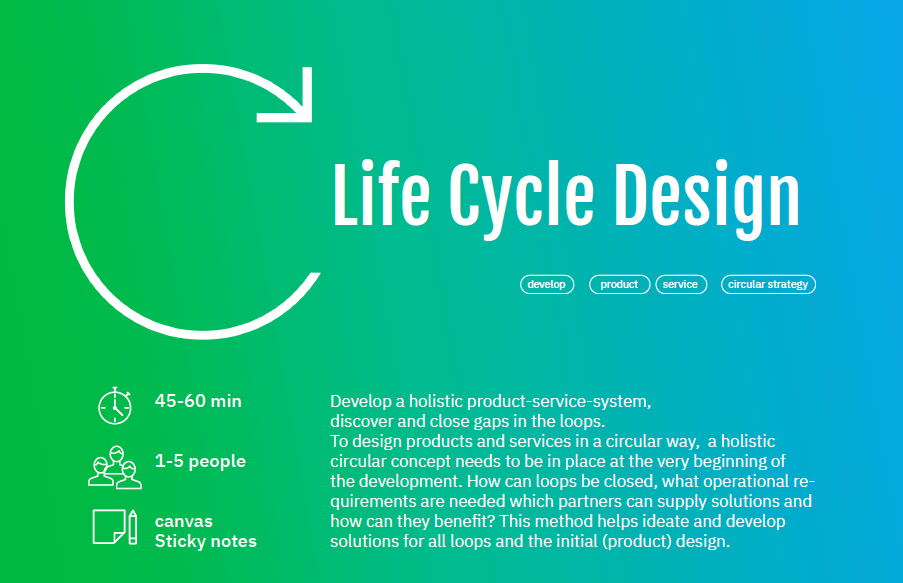The six levers designers can use to unlock the potential of circular design
“Designers come with a creative mindset and are natural storytellers – through narrative creation and visualisation they can help motivate others to take action.” Jamie Bates, Global Design Leader, Unilever
To achieve their circular economy ambitions, organisations need to leverage design systemically. Developed for designers, by designers, the adaptive strategy for circular design by The Ellen MacArthur Foundation offers six entry points for organisational transformation.
Collectively, these focus areas, based on the experiences of design leaders, help to illuminate the organisational spaces where designers can most effectively influence systemic change. Each point is supported by case studies to illustrate the different system levels at which they can be applied:
1. Observe and interpret the system
Mapping a system is to bring to the surface the different elements that constitute that system, as well as their interconnections and interdependencies. When visualising systems that relate to the circular economy, common elements include actors, activities and events, resources and information, policies and incentive structures, and the flows and relationships between them – all of which need to be viewed in the context of the whole. This process reveals the nuanced forces that influence the system in question, and surface why it might produce certain positive or negative outcomes today.
2. Envision circular futures
When people are invited to envision and experience an aspect of the circular economy, barriers fade away. Imagined scenarios can be used as common ground between people from different disciplines and backgrounds. In this way, circular futures reveal unanswered questions, further avenues to explore, and new collaborations. This stage is a powerful way to gain buy-in from stakeholders throughout your organisation or value chain.
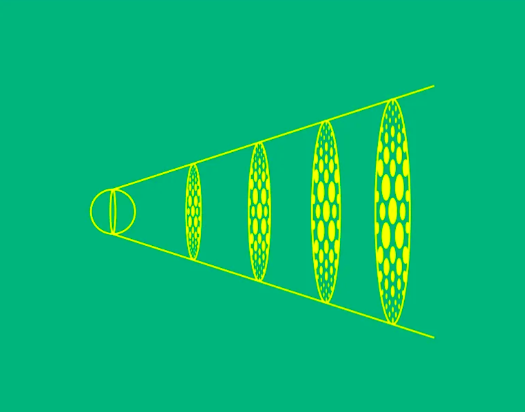
3. Create the conditions for collaboration
When it comes to circular design, the imperative is to bring diverse actors to the process and create the space for them to use their strengths to work on the intersection of issues, and support them as they discover new avenues and actions to shift the system at different scales. Successful collaborative action brings together the unique qualities, expertise, innovation and manufacturing capabilities, financial resources, and influence of an organisation, community, or individual to respond to a circular design challenge.
4. Build circular design capabilities
When considering how or where to find capabilities in circular design, organisations shouldn’t overlook the existing skills in their design and innovation teams. After all, well-trained, empowered designers helped build our current linear economy – they can help build a circular economy too, providing they are directed towards different outcomes.
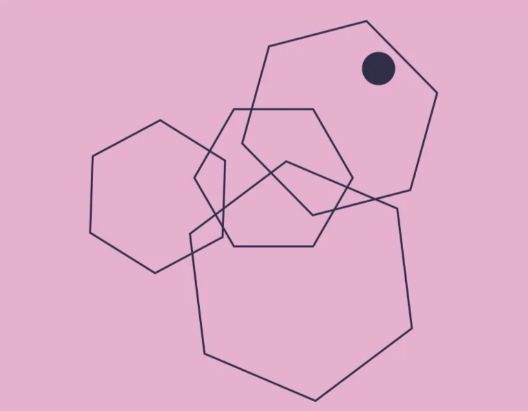
5. Rewrite the rules
At a pragmatic level, teams can use circular design guidelines to steer characteristics like material composition, durability, repairability, and interoperability. They can help reduce ambiguity and navigate trade-offs during the development of new circular products and services.
6. Develop tools to design and evaluate
Design tools encompass a broad spectrum of enablers. They can include digital services, canvases, ideation prompts, guidelines, and indicators for impact evaluation, among others. They can help teams work more creatively and collaboratively in unpacking the circular economy opportunity and aligning with strategy. Creating circular design tools requires us to always keep in mind the overall goals as well as the impact, to ensure that we design and choose the most adequate tool. What if instead of keeping track of progress against KPIs (Key Performance Indicators), highly useful for the linear economy, we redesigned this metric? For example, KVIs, standing for Key Value Indicators, which would reflect whether or not an organisation is delivering towards the circular future they envision.
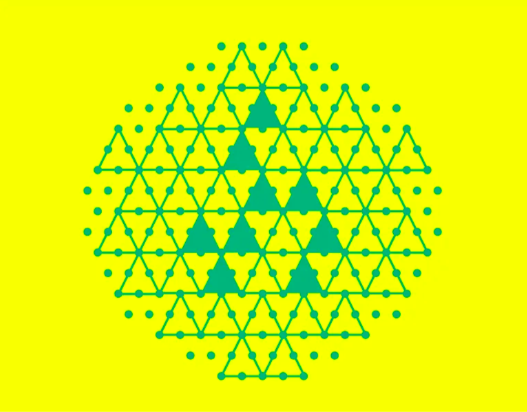
Onwards
The growing awareness of the inadequacy of downstream solutions is just one reason why designers and creatives can now see and seize the full potential of a circular economy. Many are already redesigning existing products and services so that they are fit for a circular economy. However, “circular-ready” products and services which still sit within a linear system are often limited in scope and impact. Instead, it’s vital to rethink the core ways in which organisations plan, conceive, develop, test, launch, and measure innovation.
In order to avoid patching up a flawed linear system, individuals and organisations need to both better understand how things currently operate and think more deeply about how things might function in a fundamentally different way. We need to imagine – and constantly reimagine – a circular future.
//
Article source & images: ellenmacarthurfoundation.org

A practical sustainable growth playbook for businesses
A global transition towards a carbon-neutral circular economy is an opportunity for all companies to develop new business, expand into new markets and create sustainable growth. A new playbook compiled by Finnish Innovation Fund Sitra and Deloitte to help companies in this task.
This is a practical guide that provides insight, examples and hands-on tools to help business transition to the circular economy. It is aimed at companies that want to differentiate themselves from their competitors, respond better to the needs of customers and other stakeholders as well as create more value with fewer resources. This is made possible by five circular business models presented in this guide.
The circular economy is not about constantly producing more goods but getting more value from what we have, and we keep that value in the economy for as long as possible through smarter design, digital solutions and consumption based on the use of services rather than ownership.
A transition to the circular economy involves new ways of thinking about and using materials and products. For businesses, the circular economy offers tools to create more value with fewer resources. It is also an opportunity to meet the changing needs of customers, cut expenses, minimise risks and make business more sustainable for the planet.
As this playbook shows, the circular economy is an inevitable trend that all businesses need to integrate with. Change affects every business and the benefits of being at the forefront are being shared now.
Download the playbook HERE.

New circular transition toolkit by Danish Design Center
The transition into a sustainable circular economy is no easy task. It requires fundamental changes in the way companies design, produce, and distribute products. We need to bend the linear business models of the present and start building products and systems where waste is no longer a part of the equation. This puts enormous pressure on companies to act, with an overwhelming risk of stumbling before even getting started.
The freshly published Danish Design Center’s (DDC) circular transition toolkit helps companies explore and develop circular business opportunities. The eight tools are a resource for companies and organizations who want to work more creatively and collaboratively in their team or organization towards circularity.
The methods are divided into three categories:
- Exploring the problem space
- (Co)-creating new circular solutions
- Making the future concrete
Each tool has step-by-step process guides and is free of charge. Some of the tools are unique to DDC’s own methodology, and some are borrowed from other organizations.
Explore the toolkit, guiding videos and worksheets here.
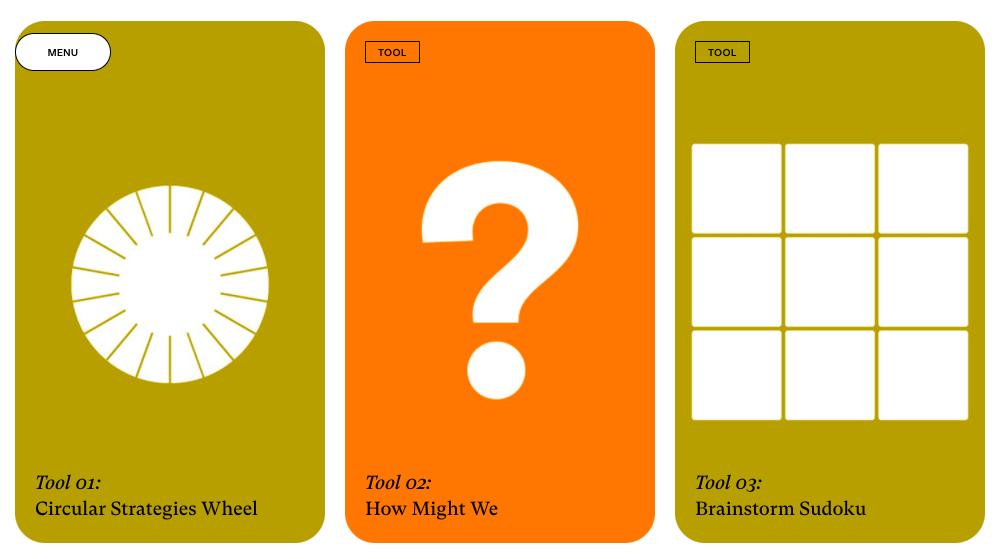
//
News source: ddc.dk

New ecodesign toolkit for designers
Learn about a radical, restorative & regenerative approach to business in the new circular design toolkit created by the international Ecodesign Circle.
Targeted to enterprises, startups, ecodesign experts and designers, the toolkit offers practical worksheets, which can be downloaded and used in ecodesign workshops and in circular business model development. The recources are also available as interactive Mural boards.
Use the tools to develop incremental steps towards your circular future.




